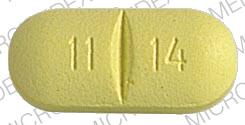Methenamine/sodium biphosphate Disease Interactions
There are 8 disease interactions with methenamine / sodium biphosphate.
- Inflammatory bowel disease
- Intestinal obstruction disorders
- Crystalluria
- Gout
- Liver disease
- Hypocalcemia
- Phosphate imbalance
- Electrolyte imbalance
Laxatives (applies to methenamine/sodium biphosphate) inflammatory bowel disease
Major Potential Hazard, Moderate plausibility.
The use of laxatives is contraindicated in patients with inflammatory bowel disease. Patients with inflammatory bowel disease may experience colonic perforation with use of stimulant laxatives.
Laxatives (applies to methenamine/sodium biphosphate) intestinal obstruction disorders
Major Potential Hazard, Moderate plausibility. Applicable conditions: Gastrointestinal Obstruction
The use of laxatives is contraindicated in patients with intestinal obstruction disorders. Patients with intestinal obstruction disorders may need their underlying condition treated to correct the constipation. Some laxatives require reduction in the colon to their active form to be effective which may be a problem in patients with intestinal obstruction.
Methenamine (applies to methenamine/sodium biphosphate) crystalluria
Major Potential Hazard, High plausibility. Applicable conditions: Renal Dysfunction, Dehydration
The use of methenamine salts (i.e. methenamine hippurate or mandelate), but not the base, is contraindicated in patients with severe renal impairment or dehydration. Methenamine is excreted by the kidney and concentrated in the urine. In patients with low urinary output, the salts can precipitate and cause crystalluria.
Methenamine (applies to methenamine/sodium biphosphate) gout
Major Potential Hazard, Moderate plausibility.
Methenamine mandelate (salts), should be avoided in patients with gout as it may precipitate urate crystals in their urine. A similar situation may arise in patients with a predisposition to the formation of uric acid stones.
Methenamine (applies to methenamine/sodium biphosphate) liver disease
Major Potential Hazard, High plausibility.
The use of methenamine and its salts (i.e. methenamine hippurate or mandelate) is contraindicated in patients with severe hepatic impairment. Methenamine is hydrolyzed to ammonia and formaldehyde in the urine under acidic conditions. Patients with liver disease may already have elevated ammonia levels, which can cause or exacerbate hepatic encephalopathy. Methenamine hippurate has also been associated with isolated cases of transient elevations in serum transaminases. The manufacturer recommends periodic liver function tests during therapy, particularly in patients with preexisting liver dysfunction.
Phosphates (applies to methenamine/sodium biphosphate) hypocalcemia
Major Potential Hazard, High plausibility. Applicable conditions: Pancreatitis
The use of phosphates is in general contraindicated in conditions where high potassium, high phosphate, or low calcium may be encountered such as hypoparathyroidism, osteomalacia, acute pancreatitis, or chronic renal disease.
Phosphates (applies to methenamine/sodium biphosphate) phosphate imbalance
Major Potential Hazard, High plausibility. Applicable conditions: Hypoparathyroidism, Renal Dysfunction
Therapy with phosphates should be administered with extreme caution in patients with hyperphosphatemia (hypoparathyroidism or severe renal impairment). Elevated serum concentrations of phosphate and calcium can exceed the solubility level and result in calcium-phosphate precipitates that deposit in vascular and renal systems as well as other soft tissues of the body. Clinical monitoring of serum calcium and phosphate concentrations is necessary.
Sodium phosphate (applies to methenamine/sodium biphosphate) electrolyte imbalance
Major Potential Hazard, High plausibility. Applicable conditions: Dehydration, Congestive Heart Failure, Phosphate Imbalance, Gastrointestinal Obstruction, Inflammatory Bowel Disease
The use of sodium phosphates is contraindicated in patients with congenital megacolon, intestinal obstruction, imperforate anus, active inflammatory disease or congestive heart failure. Serious, potentially life-threatening electrolyte imbalance such as hypocalcemia and hyperphosphatemia can result with prolonged or excessive use of phosphate laxatives. Hypernatremia and dehydration can occur due to improper dilution of hypertonic saline laxatives. Therapy with sodium phosphates should be administered cautiously and frequency of administration limited in patients with renal dysfunction, colostomy, cardiac dysfunction, or electrolyte imbalance. Clinical monitoring of electrolyte concentrations is recommended.
Switch to professional interaction data
Methenamine/sodium biphosphate drug interactions
There are 464 drug interactions with methenamine / sodium biphosphate.
Methenamine/sodium biphosphate alcohol/food interactions
There is 1 alcohol/food interaction with methenamine / sodium biphosphate.
Drug Interaction Classification
| Highly clinically significant. Avoid combinations; the risk of the interaction outweighs the benefit. | |
| Moderately clinically significant. Usually avoid combinations; use it only under special circumstances. | |
| Minimally clinically significant. Minimize risk; assess risk and consider an alternative drug, take steps to circumvent the interaction risk and/or institute a monitoring plan. | |
| No interaction information available. |
See also:
Further information
Always consult your healthcare provider to ensure the information displayed on this page applies to your personal circumstances.


